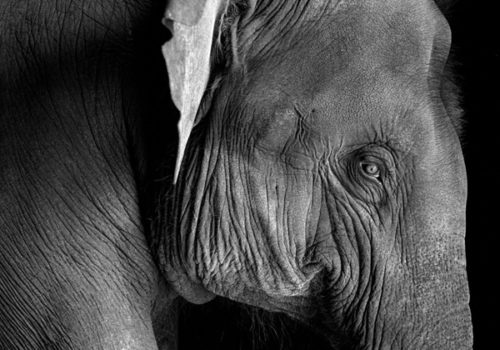Tasveer presents an exhibition of photographs by British Derry Moore. On display will be over 60 limited edition signed prints from an ongoing project Moore began in India in 1976 on a series of visits to India. The subjects combine portraits, interiors and landscapes, and poignantly document what may be the last relics and aesthetics of a pre-modernised India.
Derry Moore, the 12th Earl of Drogheda, made his name photographing the interiors and portraits on the European aristocracy, including those of Queen Elizabeth II and the late Queen Mother. Following his education at Eton, he studied painting at Oskar Kokoschka s School of Seeing in Salzburg, Austria, and later took up photography lessons under the guidance of the Bill Brandt.
Moore has published over a dozen books and his photographs can be found in the collections of the Metropolitan Museum of Art, New York,The National Portrait Gallery, London, The Royal Collection and the Bibliotheque Nationale, as well as in numerous private collections.
Evening Ragas
The photographs from my Evening Ragas series were taken during a series of visits to India that started in early 1976. My initial idea had been to photograph some of the places whose days, I knew, were numbered. In the event what fascinated me was not simply the places themselves but also the hybrid quality of many of the lesser buildings that had been constructed since the first arrival of the British in India. A cultural osmosis was clearly discernible, that of British and European architecture on Indian buildings, and that of India and its climate, as well as its styles, on the British. In the latter instance a grandeur and a sense of space, such as are rarely seen in Britain, were frequently the outcome: rooms were higher, windows larger, corridors wider, detail more lavish; the porticoes of relatively humble houses might have been snatched from the front of the British Museum. The appearance of their inhabitants too surprised me. I had been expecting folkloric looks, where as what I found was far more interesting the look and atmosphere of another century.
Though I did not realise it at the time, a transformation was beginning to overtake India, a transformation effected not merely by political change, such as the revocation of the princes rights and privileges, and thus the effective extinction of the princely states, but also by technological change. In 1976 the telephone still appeared to be in its infancy to telephone from one part of Bombay to another could take the best part of a morning, and as for telephoning from, say, Gwalior to Lucknow, only an optimist would attempt it. Inconvenient as this might be, it had the effect of making the country even vaster. Life was more unpredictable and more surprising, and that feeling of adventure which is such a vital feature of Kipling s writings could still be sensed. Television was barely known, its homogenising effects yet to come. Mass tourism, with its camp-follower banality, was also a virtual stranger. Anything imported was prohibitively expensive, and handmade was the rule rather than the exception. The motor car – and by 1976 there were effectively only two models, both quite humble, to choose from was a luxury rather than a necessity. Moreover, since Independence the ethos of Indian politics had been Socialism with a sympathetic tilt towards the Communism of the Soviet Union. This had created a veneer of progress beneath which a traditional way of life was carried on with no more than its customary inconveniences.
Derry Moore
EXHIBITIONS
• Tasveer, National Institute of Design
Ahmedabad – 15 June – 24 June 2012
• Tasveer, Seagull Centre for the Arts
Kolkata – 17 August – 28 August 2012
• Tasveer, The Gallery at Sua House
Bangalore – 12 October – 02 November 2012
• Tasveer, Gallery Art Motif
Delhi – 22 February – 05 March 2013
• Tasveer, Institute for Indian Contemporary Art.
Mumbai – 08 May – 14 May 2013
















